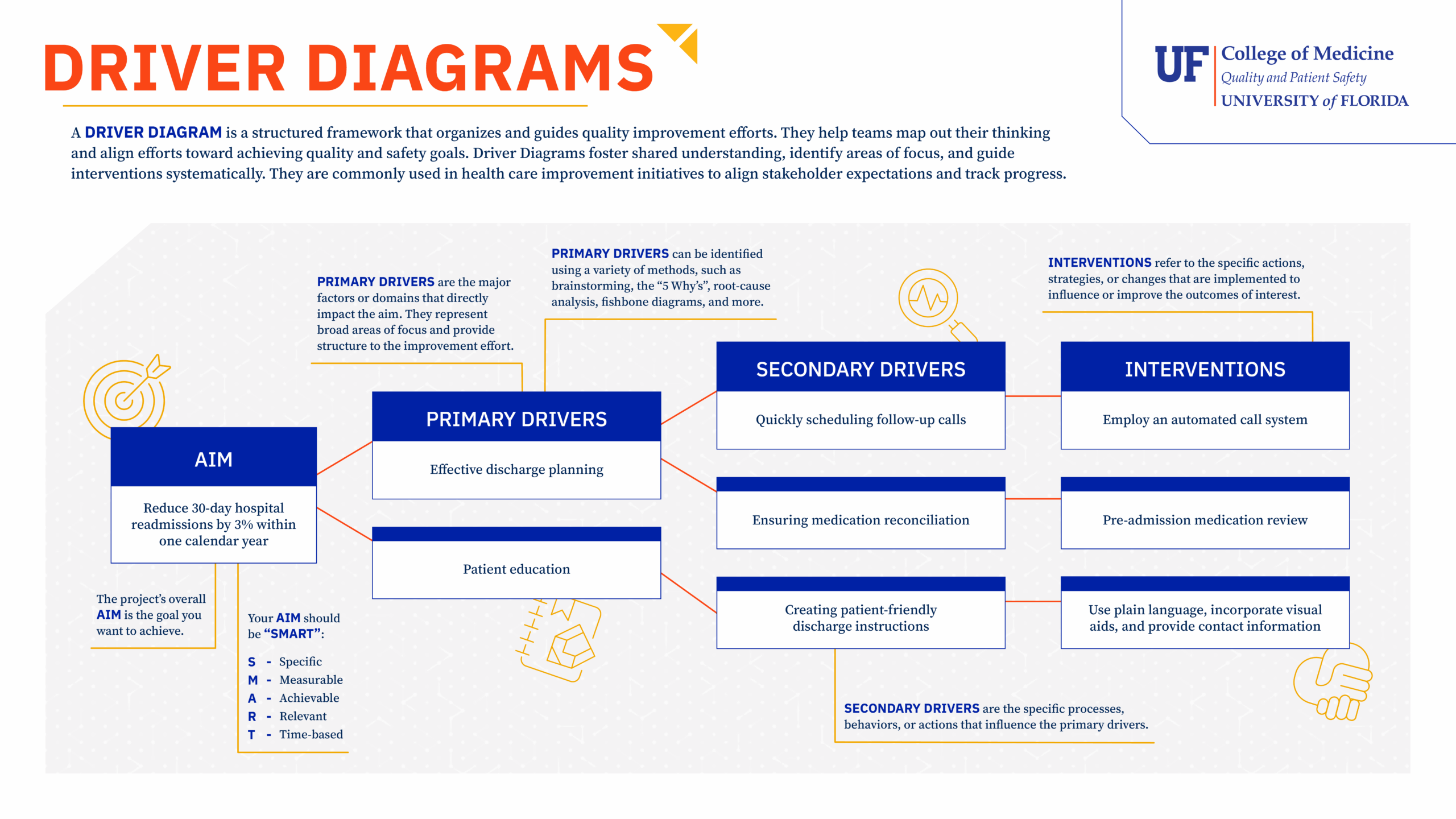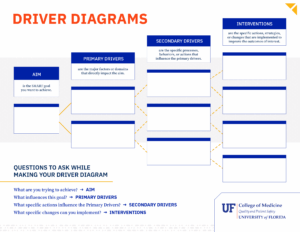What is a Driver Diagram?
Starting a quality improvement project can feel like navigating a complex map without a compass. Your team has a clear goal, but how do you organize all your ideas and ensure every action you take is moving you in the right direction? A driver diagram is the tool that provides that clarity. It’s a simple, visual framework that helps your team map out its thinking, connect your goal to specific actions and build a shared strategy for success.
At its core, a driver diagram helps answer three fundamental questions:
- What are we trying to achieve?
- What key factors influence that goal?
- And what specific actions can we take to make an impact?
By linking your project’s Aim to its Primary Drivers (the main areas of focus) and Secondary Drivers (the actionable steps), you create a powerful roadmap. This structure not only clarifies the logic behind your improvement plan but also ensures everyone on the team understands how their work contributes to the bigger picture.
Resources
Explore resources you need to master this essential QI tool. Learn how to build a driver diagram that breaks down complex problems into manageable parts, focuses your team’s efforts, and drives measurable improvements in patient care.
Improvement Insights: Introduction to Driver Diagrams
This short video explains the concepts behind and the purpose of driver diagrams, including the aim, primary drivers and secondary drivers that are integral to pursuing quality improvement goals.
Download the Driver Diagram Infographic

This infographic provides insight into the parts of a driver diagram, including the aim, the drivers and the interventions. It also reminds you that your aim statement should be in the form of a SMART goal.
Quality and Safety Unpacked: Driver Diagrams
Explore an example use of a driver diagram, including the formulation of an aim statement with SMART goals. Then learn how your team can identify primary and secondary drivers that impact your quality improvement goals.

Download the Driver Diagram Template
Use this template to guide your team in using a Drive Diagram to uncover important quality improvement opportunities, potential barriers, and appropriate interventions.

